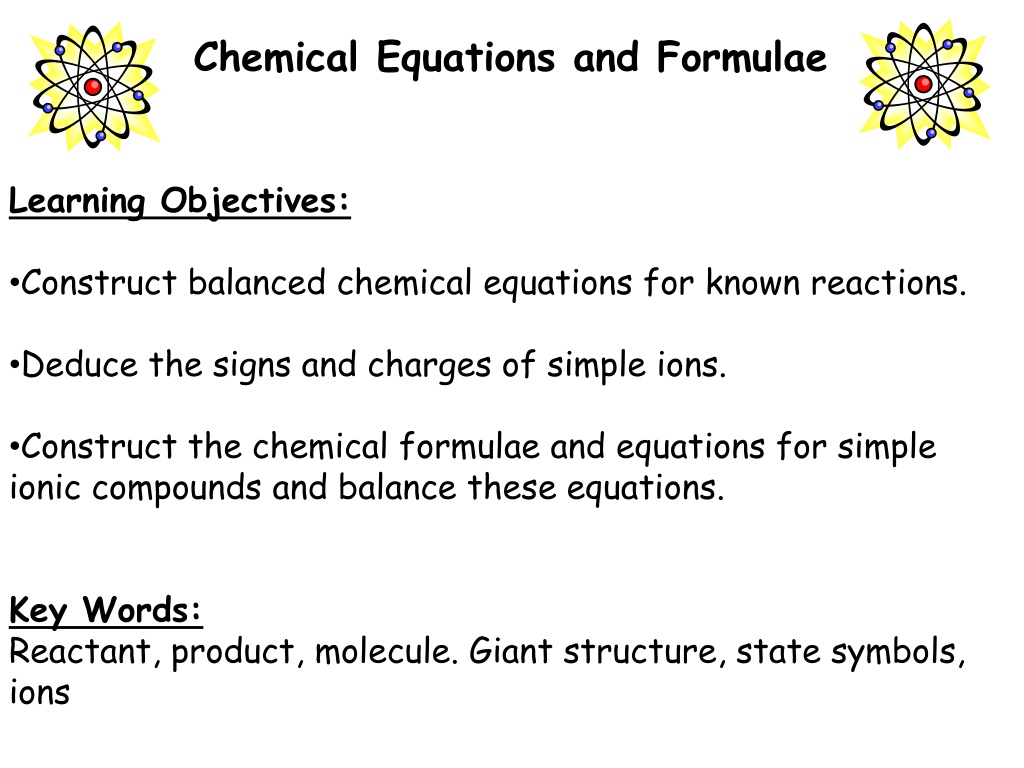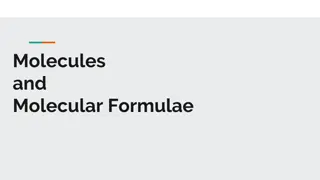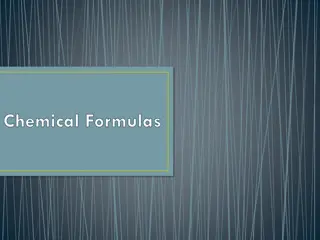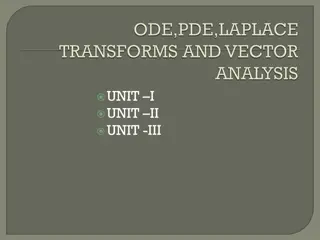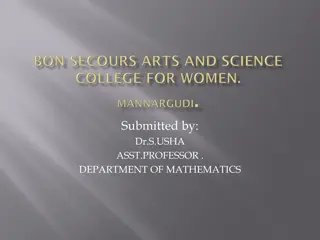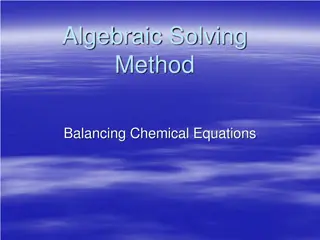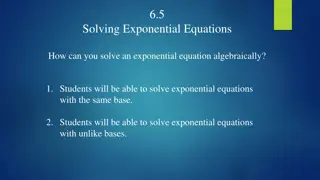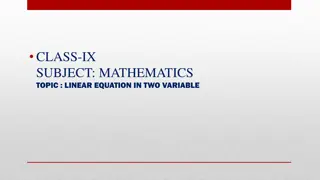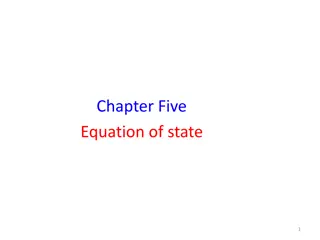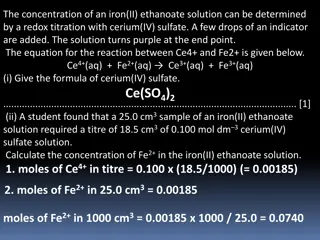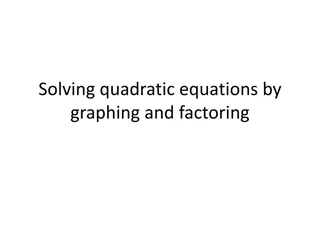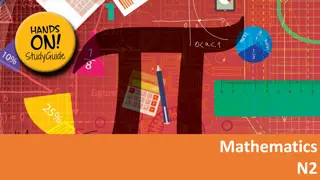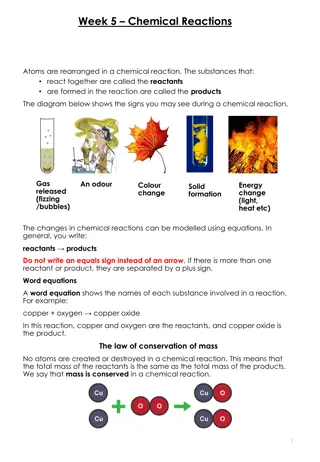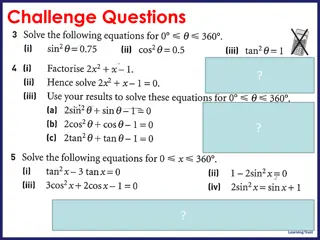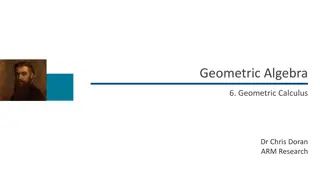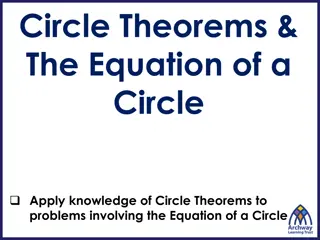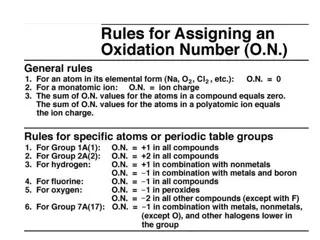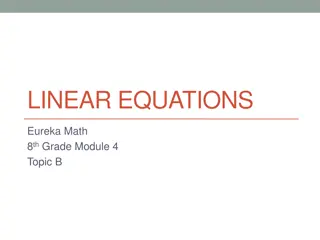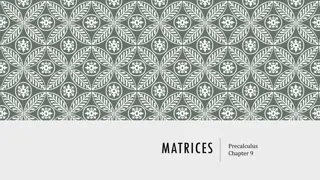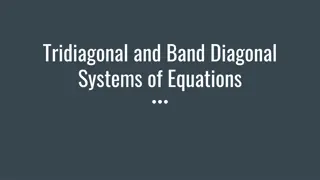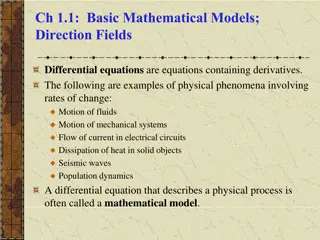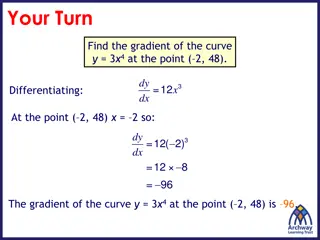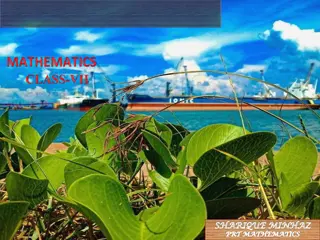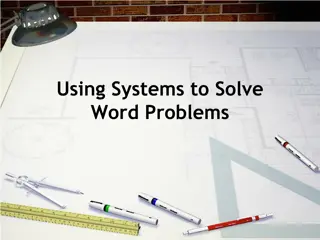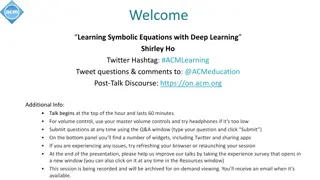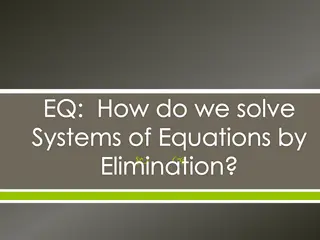Understanding Chemical Equations and Formulae
Learn to construct balanced chemical equations for known reactions, deduce signs and charges of simple ions, and create chemical formulae for ionic compounds. Understand the concepts of reactants, products, molecules, giant structures, state symbols, and chemical formulas for various substances. Gain insights into how to work out charges on ions and the formation of different types of ions based on the periodic table.
Download Presentation

Please find below an Image/Link to download the presentation.
The content on the website is provided AS IS for your information and personal use only. It may not be sold, licensed, or shared on other websites without obtaining consent from the author. Download presentation by click this link. If you encounter any issues during the download, it is possible that the publisher has removed the file from their server.
E N D
Presentation Transcript
Chemical Equations and Formulae Learning Objectives: Construct balanced chemical equations for known reactions. Deduce the signs and charges of simple ions. Construct the chemical formulae and equations for simple ionic compounds and balance these equations. Key Words: Reactant, product, molecule. Giant structure, state symbols, ions
Reactants and Products We know that in a chemical reaction the number and types of atoms are preserved and we cant create or destroy atoms. Reactions only rearrange atoms into new combinations. Chemical reactions start with Reactants and a chemical change occurs to form Products. Reactants Products When writing a reaction we need to identify the reactants and products.
Types of Substances Molecules In equations a simple molecule is shown by its molecular formula e.g. N2, O2, H2, H2O, CO2, CH4 Giant Structures Giant structures like salts or ionic crystals or giant covalent structures are shown as their empirical formula e.g. NaCl, MgCl2, SiO2. Also some elements have giant structures all metals and some non-metals e.g. C, Si, B
State Symbols State Symbols are added to provide more information. Include these in all equations toy write This good habit will avoid loosing valuable marks in exams and tests. (s) = solid (l) = liquid (g) = gas (aq) = aqueous (in a water solvent)
Chemical Formula In ionic compounds anions and cations combine to form a compound. There are some simple guidelines that will help you get the formulae of ionic compounds right. the charges on the ions in the formula have to add up to zero Na+ will cancel out the charge on one Cl- so the formula of sodium chloride is NaCl One Ca2+ ion blanaces the charge on two Cl- so the formula of calcium chloride is CaCl2 - the number of Cl- ions is indicated by a subscript number after the symbol Cl
Chemical Formula you can work out the charges on simple ions from the periodic table All metals form positive ions because they lose electrons to get a full outer shell Group 1 elements lose one outer electron so they form 1+ ions like Na+ Group 2 lose two outer electrons so they form 2+ ions like Mg2+ Three common metals form 3+ ions - Al, Cr and Fe You will gradually get to know the charges on other metal ions but if in doubt try 2+ eg Cu2+ or Pb2+ All non-metals form negative ions by gaining enough electrons to give them a full outer shell Non-metals in group 7 gain one electron to form 1- ions like Cl- Non-metals in group 6 gain two electrons to form 2- ions like S2-
Chemical Formula you have to learn the formulae and charges on some complex ions. Complex ions are made from more than one atom Nitrate NO3- One nitrogen atom and 3 oxygen atoms, 1- charge Sulphate SO42- One sulphur atom and 4 oxygen atoms, 2- charge Carbonate CO32- One carbon atom and 3 oxygen atoms, 2- charge Ammonium NH4+ One nitrogen atom and 4 hydrogen atoms, 1+ charge
